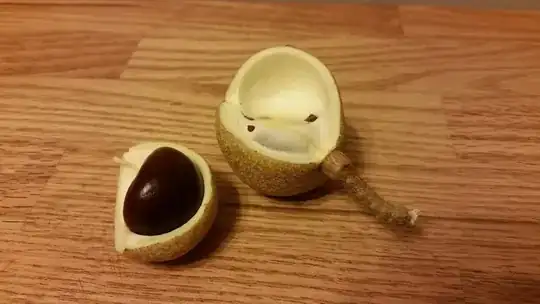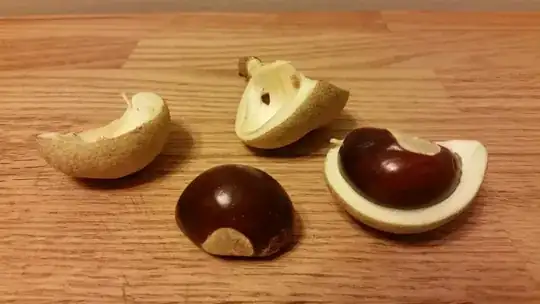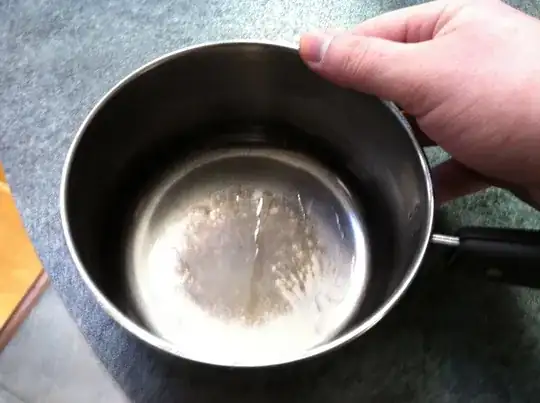I ask this knowing that it's possibly borderline off-topic, but I don't see a Botany SE site where I could ask, so...
A few days ago I stumbled (literally) upon an odd little fruit that had fallen onto the sidewalk. It fascinated me because it had three large lobes and a hard, mottled outer texture. I couldn't figure out what it was, so I brought it home and promptly forgot about it for a couple days.
When I picked it up today, one lobe had softened, and with a little pressure I was able to pop it off. The lobe contained a smooth, dark-brown nut!
Upon examination this reminded me of a chestnut. I broke off another lobe and found a second pod:
I have no idea what these are; they appear very similar to chestnuts but are missing the pointed tip and spiny shell. I don't know what to make of them.
Does anybody know what these are? More to the point for this site, are they (safely) edible? I noticed a lot more had fallen nearby, and I'm not above gathering some if they're tasty.





